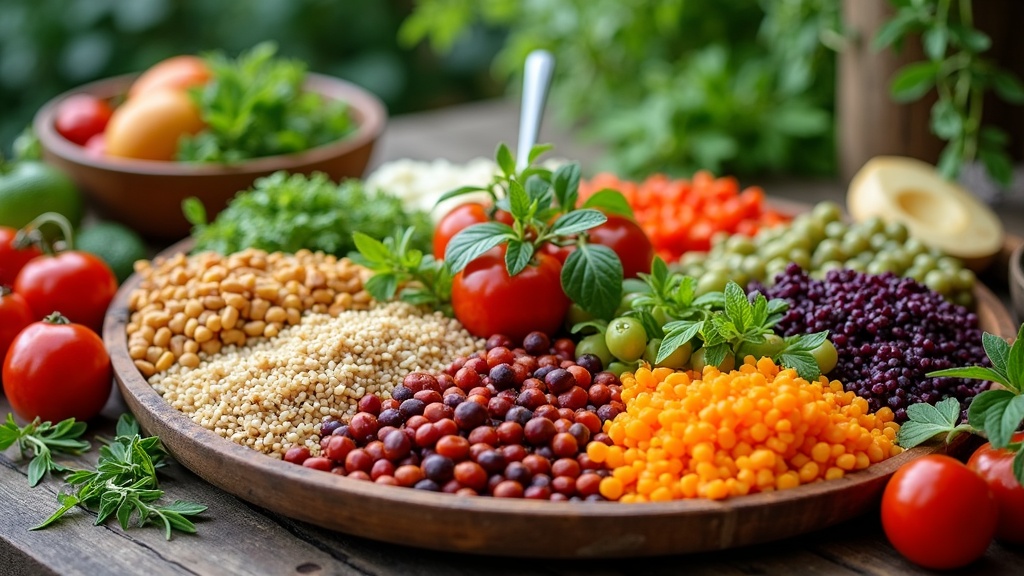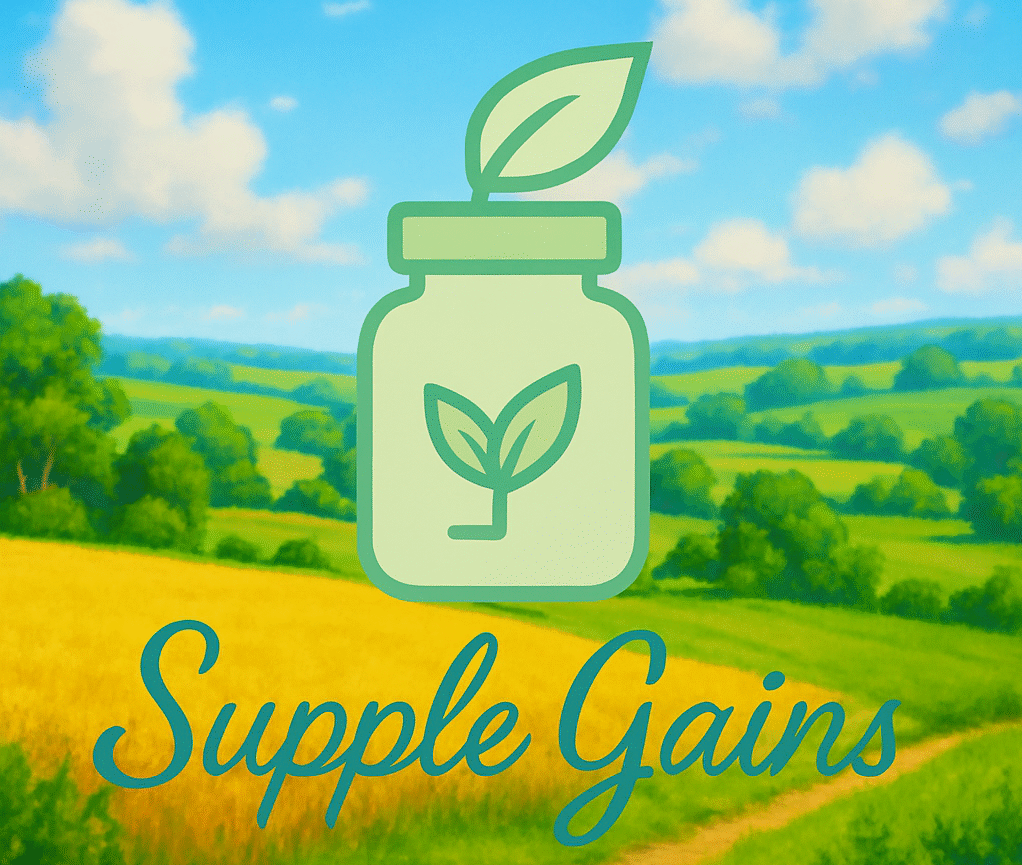Plantbased diets have become a pretty hot topic lately, popping up everywhere from social media to documentaries.
But there’s way more to this movement than just swapping out burgers for veggie patties.
For me, switching toward a plantbased way of eating made me feel like I was really doing something good—not only for my health, but for the environment too.
Choosing more plants and fewer animal products doesn’t sound like a huge thing, but when enough people make the switch, the combined impact can be pretty huge.
So, if you’ve been curious if what you eat can be a tool for environmental activism, you’re definitely not alone.

Why Plantbased Diets Matter for Environmental Activism
The idea that our daily food choices add up to real environmental consequences is getting a lot more attention.
Agriculture is a big player when it comes to climate change, deforestation, and water use.
Animal agriculture, in particular, makes up a big chunk of carbon emissions; according to the United Nations Environment Programme, livestock produces about 14.5% of global greenhouse gases.
That’s more than all the world’s cars, planes, and ships combined. Raising animals for food also uses huge amounts of land and water, and it leads to deforestation, especially in places like the Amazon.
Switching to a plantbased diet isn’t just about reducing your own “foodprint.”
It’s a way to take direct action against issues like species loss, soil erosion, and water scarcity.
Each meal packed with grains, veggies, beans, and fruits instead of meat or dairy helps shrink the demand for land and resourceintensive animal farming.
Getting Started with Plantbased Eating for the Planet
Changing your diet can be intimidating, but you don’t have to go all in overnight to make it count.
For most people, starting slow works best. Going plantbased looks a bit different for everyone, but for environmental activism, even small steps make a difference.
I found it helps to get familiar with the basics of plantbased eating so you know what foods will give you the nutrients you need and let you feel your best.
Here are a few terms and concepts worth knowing:
- Whole Food Plantbased (WFPB): Focuses on whole grains, beans, fruits, veggies, nuts, and seeds, keeping out most processed foods.
- Flexitarian: Eats mostly plantbased but doesn’t totally rule out animal products—great for gradual change.
- Vegan: Excludes all animal products, not just food but sometimes other products too.
- Carbon Footprint: The total amount of greenhouse gases, like CO2, produced over the life of a food or product.
Focusing your meals on plants directly reduces your carbon footprint and supports environmental activism a meal at a time.
Simple Guide to Making Plantbased Choices Count
If you’re looking to use your meals as a tool for activism, here are some easy ways to get started and feel good about it:
- Start with One Plantbased Day a Week: Try “Meatless Monday” or another allplant day. Even this small step saves resources and gets you comfortable with new recipes.
- Stock Up on Staples: Beans, lentils, brown rice, oats, frozen veggies, and canned tomatoes are cheap and super useful for quick meals.
- Shop Local and Seasonal: Eating local and seasonal produce lowers the shipping footprint and helps local farmers, who often use fewer chemicals and better methods than big agribusiness.
- Share Your Plate: Telling friends about your plantbased meals or bringing a veggie dish to a potluck can spark conversation and inspire others.
- Support Companies with Values You Like: Look out for brands that are transparent about sustainability, or join a CSA (community supported agriculture) to connect straight to farmers.
Tiny changes add up, and starting somewhere is already making a difference.
You don’t need to make it stressful—find a pace that works for you, and try new recipes, perhaps something as simple as a lentil soup or a vegetable stirfry.
You may even stumble upon a new favorite dish along the way.
Things to Think About When Choosing Plantbased for the Environment
Switching toward plantbased eating as activism isn’t without its challenges and there are some important things to keep in mind.
Here are a few to watch out for and some tips I’ve picked up along the way:
- Processed Plant Foods: Not all plantbased foods are equally good for the environment. Ultraprocessed options can pack a heavy resource load. Homecooked or minimally processed meals usually make a bigger difference.
- Food Miles: Some plant foods, like outofseason avocados or almonds, have a pretty big water or carbon cost, especially if they’re shipped long distances. Balance local and imported foods when you can.
- Social and Cultural Considerations: Food is personal, and in some communities, plantbased eating might be trickier to find your way or less accessible. The activism angle is about progress, not perfection.
- Cost: Some folks worry that plantbased eating gets expensive, but in my experience, focusing on basics like beans, lentils, and grains keeps things budget friendly.
Choosing thoughtfully helps you have a bigger impact and makes the lifestyle way more enjoyable too.
It also helps to make a habit of checking labels for hidden ingredients and getting a sense of which brands are more earth friendly over time.
Processed Plant Foods
Plantbased burgers and dairy swaps are popping up everywhere, and while they can help with transitioning, they’re not always lighter on the planet than cooking up some beans, rice, or potatoes.
I like to use these for convenience sometimes, but I try not to make them my main thing.
Homemade meals made from staples are generally more earth conscious and often more nutritious, too.
Food Miles
The “miles” food travels from farm to plate can pile up, especially with specialty items.
Eating what grows close to home, and in season, helps cut down transport emissions and usually gets you fresher options anyway.
Farmers markets are a good spot to track down local produce and support your community at the same time.
Social and Cultural Considerations
Diet connects us to tradition and family.
I’ve learned to adapt my favorite recipes, swapping in lentils for ground meat or coconut milk for dairy, so I still get that familiar comfort without the heavier footprint.
Community cookbooks and online groups are great for inspiration here.
It’s all about enjoying your cultural roots while making choices that line up with your values.
Cost
Plantbased shopping has a reputation for being pricey, but sticking mostly to the basics keeps costs down.
I buy most things in bulk and plan enough to avoid produce waste.
Buying frozen veggies can help your wallet and reduce spoilage, too.
Plenty of plantbased products are budget friendly; beans, grains, and veggies are among the most affordable and nutritious staples you’ll find.
In my experience, prepping meals in advance also saves time and cuts down impulse purchases.
When planning your weekly meals, consider doublesized recipes that can be used for leftovers.
No switch is perfect, but focusing your energy where you can actually see (and taste) the impact is rewarding.
Be patient with yourself—the goal is progress, not perfection, and even small changes will add up over weeks and months.
Advanced Tips for Taking Plantbased Activism to the Next Level
Once you’re comfortable including more plantbased meals, you might want to take your activism up a notch.
Here are some ways to push your efforts further:
Join Environmental Groups: Loads of advocacy groups speak up for plantbased diet policies; volunteering or just staying informed can help your voice carry further.
Start or Join a Community Garden: Growing your own food cuts packaging, transportation, and chemical use.
Plus, it’s a good way to connect with others who care about the planet.
Host a Plantbased Food Night: Invite friends over for a meal.
Sharing is one of the most effective ways to get people thinking differently about food.
Educate Gently: Plantbased activism works best when it focuses on sharing evidence and good food, not fingerpointing.
Swapping recipes or recommending movies (like “Cowspiracy” or “Kiss the Ground”) can have a big influence without making anyone defensive.
These steps help in building a supportive community and can nudge local businesses and schools to try more earth friendly options too.
It’s often the community effect that turns individual choices into a movement—each person’s influence can spread like wildfire.
RealWorld Impact of Plantbased Choices
The power of plantbased diets comes through in a pretty direct way.
Making more meals out of beans, seeds, veggies, and grains instead of animal products directly lowers water use, carbon emissions, and land needed for food, while also reducing pollution from fertilizers and pesticides.
- Climate Action: Swapping a single beefbased meal for a lentil dish cuts carbon emissions by several times, according to a 2018 Oxford study.
- Protecting Wildlife: Rewilding land previously used for animal feed or grazing helps boost biodiversity.
- Saving Water: Lentils and other pulses use way less water than protein from livestock. For example, producing a pound of beef takes over 1,800 gallons of water, while a pound of lentils takes about 160 gallons.
Each plantbased meal is a small but steady vote for the kind of planet you want for the future.
Over time, collective action can move industries and policies in a greener direction.
Frequently Asked Questions
Here are some common questions people have about plantbased diets and their environmental impact:
Question: Does eating plantbased actually make a difference individually?
Answer:
Yes, every meal helps shrink your own footprint, and when lots of people get on board, the impact multiplies fast.
Question: Are all plantbased foods better for the environment?
Answer:
Mostly yes, but it’s a good idea to pay attention to how much processing something needs and where it comes from. Locally grown and whole foods usually perform best.
Question: How do I make plantbased eating affordable?
Answer:
Focus on simple basics like lentils, oats, rice, and fresh or frozen produce. Meal planning and buying staples in bulk goes a long way.
Making Your Diet a Force for Good
Eating more plantbased foods is one of the easiest ways to chip away at some of the biggest environmental problems.
It’s accessible, tastes good, and makes you feel like you’re actually doing something.
Every bowl of veggie chili, stir fry, or chickpea salad adds up to real change.
By shaping your habits, you inspire others without needing to stand on a soapbox or wave signs around.
Pretty cool that something as simple as what’s on your plate can make being an activist this straightforward.
Whether you’re going for one plantbased meal a week or switching your whole kitchen to greens and grains, every swap is a vote for clean air, fresh water, and a healthier world for everyone.
Stick with it, keep trying new things, and you’ll see how your choices make a difference, both in your own life and for the planet.
